They were not, and became recent political pawns.
I worked for the re-election of Congressman Bill Redmond elected to fill Bill Richardson's seat in 1997 who ran on a promise to honor the grants.
Direct descendants had been petitioning members of the government and Redmond--a conservative Republican anglo minister from Chicago--was the first to put the matter before the House.
Udall of the ecowhacko Udalls defeated Redmond and the matter died.
Of note is this: one of the most outspoken of the direct descendants reported that the major obstruction lies with a prominent family of Democrat attorneys who own some of these grants.
And the outspoken descendant? Another active lifelong Democrat.
The victim and the villain uniting to defeat the would-be rectifier of historic wrong.
As the city councils of Santa Fe and Albuquerque resolve not to cooperate with the INS and all my neighbors hablan Espanol solamente.

The Colt Whitneyville-Walker Pistol
Lt. Col. Robert D. Whittington, III
A study of the genesis of the first great Colt gun. Traces the lively collaboration between the inventor and Captain Samuel Walker, the gun's heroic champion.

The Colt Whitneyville-Walker Pistol, AKA: the U.S. Model 1847
Date: 1847
From The Colt Whitneyville-Walker Pistol by Lt. Col. Robert D. Whittington, Ill., Taylor Publishing Company, Dallas, Tex., 1984
“The Colt Whitneyville-Walker Pistol, also known as the U.S. Model 1847, was the first repeating pistol purchased by the Army Ordnance Department for service use. . . the term ‘pistol’ is used in the text primarily because the term ‘revolver’ was not in general use during the period.”
The Ordance Department contracted for 1,000 of the pistols, which were serial numbered by the company.

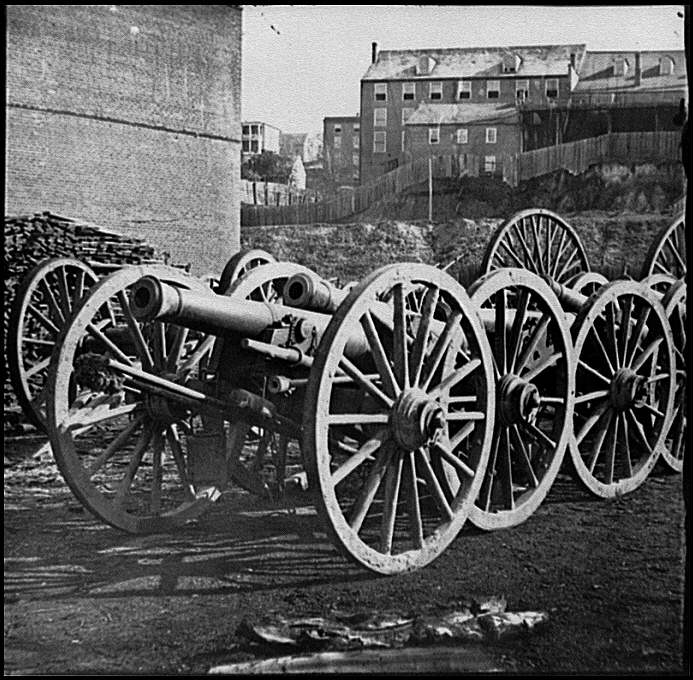
Model 1841 6-pounder field guns
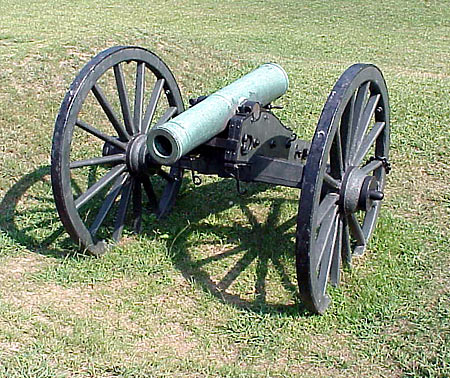
The Model 1841 12-pounder was the standard field howitzer used in the Civil War. Because of its higher trajectory at which it was typically fired, it could fire a shell over 1,000 yards with less than one pound of powder.
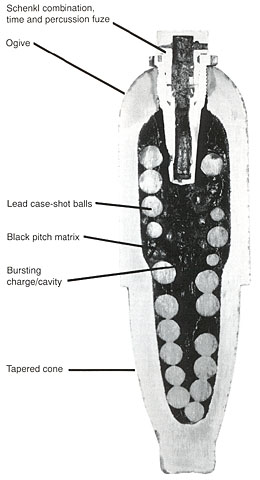
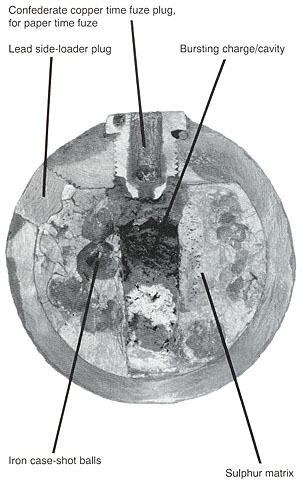

Canister Shot - These are CSA canister shot. They were all dug together at Knoxville, TN. These are a little rusty due to their composition but in otherwise perfect condition. They measure about 1" in diameter. VERY NICE!!!!

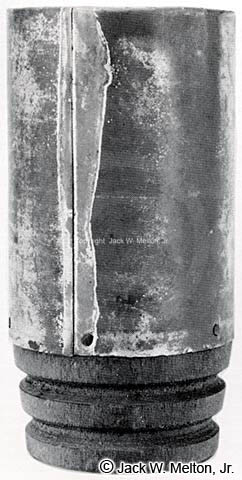
Federal
Conical
DIAMETER: 3.59 inches
GUN: 6-pounder smoothbore, 3.67-inch caliber
LENGTH: 6 7/8 inches
WEIGHT: 7 pounds 8 ounces
CONSTRUCTION: Canister
SABOT: Wooden cylinder
FUZING: None
This specimen is non-excavated and is an example of the most common style canister used in the 6-pounder (3.67-inch caliber) smoothbore cannon. It is 3" shorter than the standard style 20-pounder canister, also for a 3.67-inch bore. Both Northern and Southern forces used this size canister. After attachment of the cartridge bag, which was tied to the deep grooves cut into the wooden sabot, the round was referred to as fixed ammunition. Note the vertical solder seam running the length of the tin cylinder.
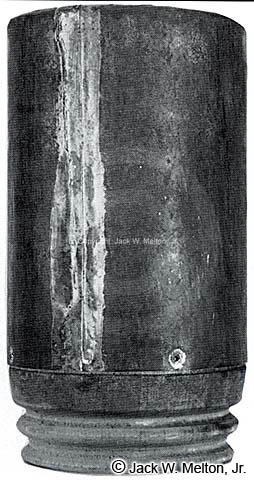
Federal
Conical
DIAMETER: 4.50 inches
GUN: 12-pounder smoothbore, 4.62-inch caliber
LENGTH: 8 inches
WEIGHT: 14 pounds 11 ounces
CONSTRUCTION: Canister
SABOT: Wooden cylinder
FUZING: None
This non-excavated specimen is the standard-style canister that both the Federal and Confederate forces used in the 12-pounder (4.62-inch caliber) smoothbore cannon. Canister was designed to be fired at close range with a resulting devastating effect on the enemy. A 12-pounder field gun with a powder charge of 2.0 pounds, fired a 12-pounder canister with an initial muzzle velocity of 1,262 feet per second.
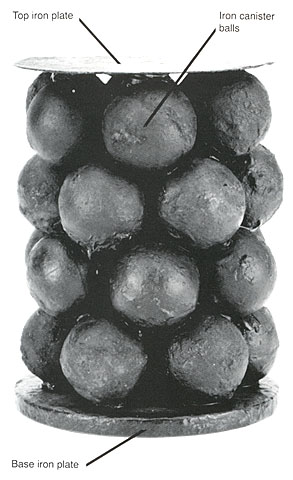
Federal & Confederate
Conical Canister
This specimen was reconstructed to illustrate the interior view of a standard 12-pounder (4.62-inch caliber) canister. Sawdust filled the spaces between the iron balls found in the pictured specimen. The tin sides are missing, as is the wooden sabot. Note that the top plate is thinner than the bottom plate, which had to absorb the initial discharge force during firing. This pattern of construction is typical of both Federal and Confederate canisters.